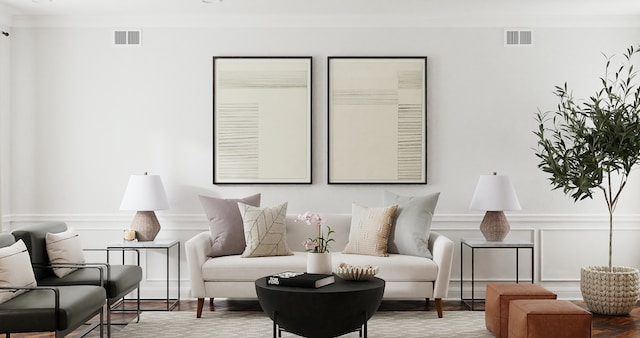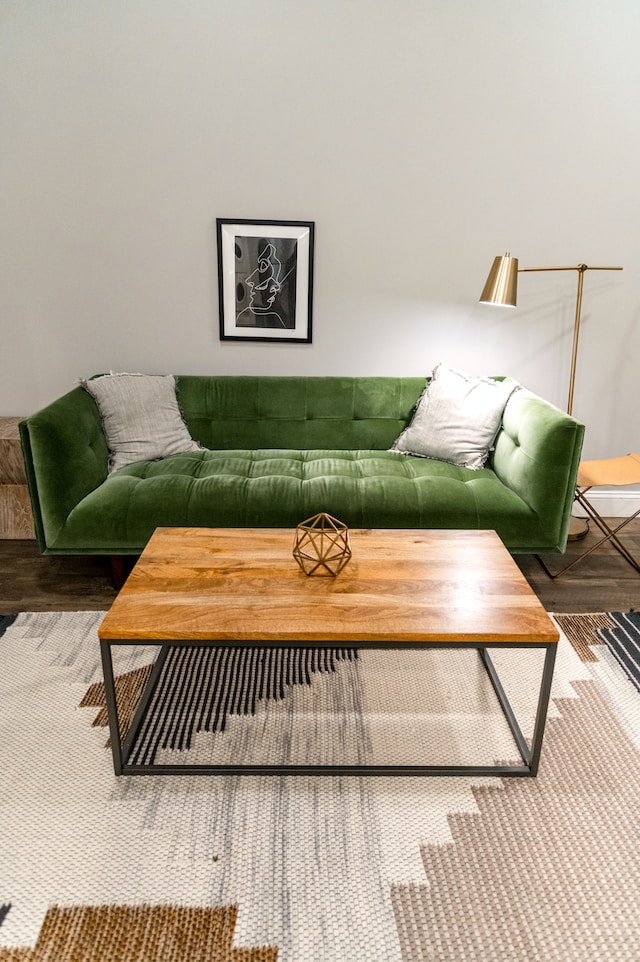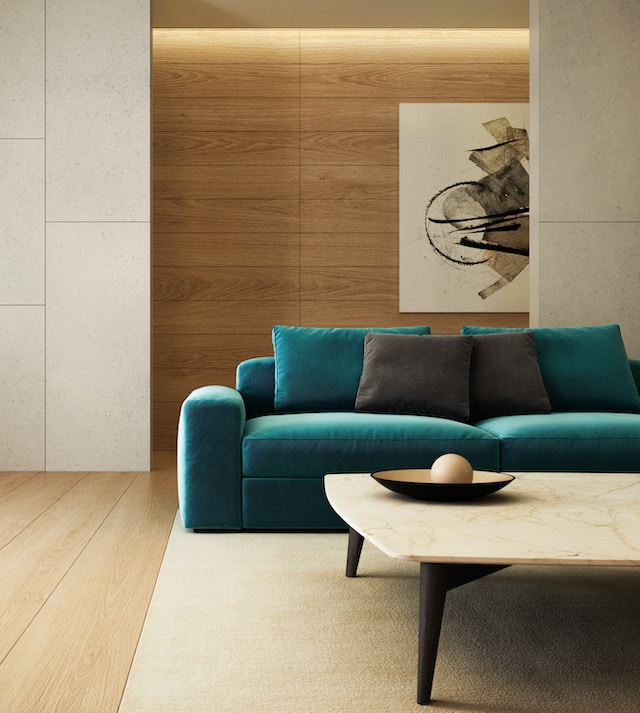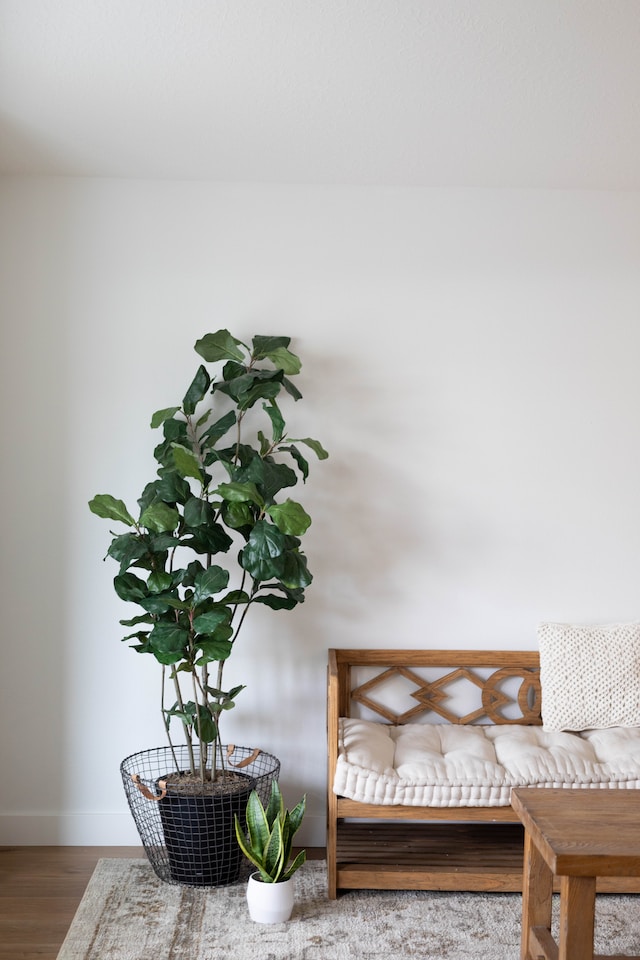
In this fast-paced world that often overwhelms individuals with clutter and chaos, the creation of a minimalist haven within one’s home serves as a much-needed respite for weary souls. Evoking a sense of sophistication and elegance, the concept of a minimalist living room transcends a mere aesthetic choice.
Instead, it represents a conscious lifestyle approach that seeks to foster harmony, serenity, and clarity. Through a deliberate curation of space and intentional design choices, a minimalist living room transforms into a sanctuary where one can find solace, engage in personal reflection, and genuinely appreciate the beauty of simplicity.
At its core, a minimalist living room revolves around the art of removing excess, allowing only the essentials to claim the spotlight. Far from a superficial endeavor, it encapsulates a philosophy that values purposeful living and deliberate choices. The minimalist living room embodies clean lines, uncluttered spaces, and a thoughtfully curated collection of cherished items. By embracing a mindset of simplicity, this space is transformed into a bastion of calm, where the mind finds respite from distractions and the spirit discovers a renewed sense of clarity.
Pros of a Minimalist Living Room
Clarity of Mind: By removing excess and simplifying our living spaces, a minimalist living room frees our minds from distractions and clutter. This mental clarity allows us to focus on what truly matters, enhancing our ability to relax, recharge, and indulge in moments of pure introspection. Reducing clutter has psychological benefits.
Enhanced Serenity: In a world filled with noise, a minimalist living room acts as an oasis of serenity. It provides a tangible space where we can escape the constant stimulation of the outside world and immerse ourselves in a calm and soothing environment. The subtle palette of muted colors, natural materials, and unobtrusive furnishings work harmoniously to create an atmosphere of tranquility. Staying calm can improve your health.
Increased Productivity: A minimalist living room allows us to declutter our physical space and our mental landscape. With fewer distractions and a clear, organized area, our focus improves, leading to heightened productivity and a greater sense of accomplishment. Settling into a minimalist living room becomes an invitation to embrace creativity and tackle tasks with renewed vigor.
Cultivation of Mindful Living: The principles of minimalism extend beyond the physical realm and into our daily lives. A minimalist living room serves as a physical reminder to practice mindful living, teaching us to appreciate the present moment, make intentional choices, and find contentment in less. It encourages us to cherish quality over quantity, making room for what truly adds value to our lives.
Planning Your Minimalist Living Room
Creating a minimalist living room requires careful planning and thoughtful consideration. Every element in the room should serve a purpose and contribute to a sense of simplicity and equilibrium. Here are some key aspects to consider when designing your minimalist haven:

Assess Your Needs: Before embarking on the design process, take a moment to assess your needs. Determine how you will be using the space and what activities will be taking place in the living room. This will help you prioritize essential items and ensure that the room meets your specific requirements.
Define Your Focal Point: Establishing a focal point is crucial in a minimalist living room, as it draws attention and sets the tone for the entire space. It can be a statement piece of furniture, a captivating artwork, or even a well-designed fireplace. By selecting and highlighting a focal point, you create a visual anchor that adds interest without overwhelming the room.
Curate Meaningful Items: A minimalist living room is not devoid of personal touches; rather, it celebrates the deliberate selection of meaningful items. Keep only the objects that hold sentimental value or serve a specific purpose, and display them artfully. Allow each piece to tell a story and contribute to the overall aesthetic of the room.
Embrace Functional Furniture: When selecting furniture for your minimalist living room, opt for pieces that prioritize both aesthetics and functionality. Choose streamlined designs with clean lines and avoid unnecessary ornamentation. Multi-purpose furniture can be especially valuable in maximizing space and reducing clutter.
Mindful Storage Solutions: Storage plays a pivotal role in maintaining a minimalist living room’s clean and uncluttered appearance. Invest in well-designed storage solutions that blend seamlessly with the overall aesthetic. Utilize hidden storage options, sleek shelving, or minimalist storage units to keep belongings organized and out of sight.
Harness Natural Light: Natural light is an essential element in a minimalist living room, as it enhances the sense of openness and brings warmth to the space. Maximize the amount of natural light by using sheer curtains, strategically placing mirrors to reflect light, and keeping windows unobstructed.
Declutter Regularly: Minimalism is a continuous process that requires ongoing effort to maintain. Regularly declutter and reassess your belongings, ensuring that everything in your living room serves a purpose or brings joy. Donate or discard items that no longer align with your minimalist vision.
Selecting the Right Color Palette
When it comes to designing a minimalist living room, choosing the right color palette sets the foundation for creating a serene and harmonious space. The colors you select should evoke a sense of tranquility and simplicity while providing a cohesive backdrop for the rest of your design choices.
Embrace Neutral Tones: Neutral colors such as white, beige, gray, and soft pastels form the backbone of a minimalist living room. These hues create a calming and timeless atmosphere, allowing other elements in the room to shine without overwhelming the space.
Create Contrast: While neutrals dominate the minimalist palette, incorporating subtle contrasting colors can add depth and visual interest. Consider adding touches of black, navy blue, or warm earth tones to create a balance between light and dark elements.
Play with Texture: Introduce texture through your color choices to add dimension to the room. Opt for textiles in natural fibers like linen and cotton, which bring a tactile element to the space and enhance the overall sensory experience.
Limit Color Accents: As tempting as it may be to introduce bold pops of color, restraint is essential in a minimalist living room. Choose a single accent color and use it sparingly to create a focal point or add visual interest. This allows the color to make a statement without overpowering the room’s overall aesthetic.
Furniture and Decor Selection
When it comes to selecting furniture and decor for a minimalist living room, simplicity and functionality should be your guiding principles. Each piece should serve a purpose and contribute to the overall aesthetic.
Streamlined Designs: Opt for furniture with clean lines and minimal ornamentation. Avoid overly ornate or bulky pieces that can overwhelm the space. Furniture with sleek silhouettes and minimalist details will contribute to the overall sense of simplicity and elegance.
Multi-purpose Furniture: Maximize space and minimize clutter by choosing multi-purpose furniture. Look for items like storage ottomans or coffee tables with built-in compartments. These functional pieces serve dual purposes, providing both utility and style to your living room.
Quality Over Quantity: In a minimalist living room, it’s important to prioritize quality over quantity. Invest in well-made furniture and decor that will stand the test of time, rather than buying cheap and disposable items. This approach not only reduces waste but also adds a touch of sophistication to your space.

Mindful Material Choices: Select furniture and decor made from natural and sustainable materials. Furniture crafted from solid wood or eco-friendly materials like bamboo not only adds warmth and texture to the room but also aligns with the ethos of minimalist living.
Open and Airy Shelving: Embrace open shelving to display your favorite books, decor pieces, and sentimental items. Avoid overcrowding shelves and instead opt for a curated selection that allows each item to stand out. Open shelving creates a sense of lightness and openness in your minimalist living room.
Thoughtful Artwork: Choose artwork that complements the aesthetic of your minimalist living room. Opt for pieces with abstract or minimalistic designs that encourage a sense of calm and contemplation. Use artwork sparingly and strategically, placing it as a focal point or a visual anchor in the room.
Purposeful Decor: When it comes to decor, embrace the principle of purposeful living. Select decor items that bring joy, reflect your personal style, or have sentimental value. Avoid cluttering surfaces with unnecessary trinkets and instead opt for a curated collection that adds meaning and visual interest.
Creating an Open and Airy Space
In the pursuit of a minimalist living room, one of the key objectives is to create an open and airy space that fosters a feeling of freedom and tranquility.
Arranging Furniture to Promote Flow and Openness
- Start by determining the focal point in the room and arrange furniture around it.
- Keep furniture away from walls to create breathing space and allow for easy movement.
- Opt for furniture with slim profiles and raised legs to give the illusion of more space.
- Consider using modular or sectional furniture to customize the layout and maximize flexibility.
- Create distinct zones within the living room for different activities, like reading or entertaining, while maintaining an open flow between them.
Utilizing Mirrors and Light to Expand the Space
- Strategically place large mirrors on walls to reflect light and make the room feel bigger.
- Hang mirrors opposite windows or in spaces where they can capture natural light and enhance brightness.
- Use sheer curtains or blinds to allow sunlight to filter through and create a soft, airy ambience.
- Incorporate artificial lighting fixtures, such as recessed or track lighting, to illuminate darker corners and create an inviting atmosphere.
- Consider light-colored furniture and walls to reflect light and make the room feel more spacious.
Emphasizing the Use of Negative Space

- Negative space refers to the empty areas in a room that give it balance and allow the eye to rest.
- Avoid overcrowding the living room with too much furniture or excessive decor.
- Leave empty spaces between furniture to create visual breathing room and a sense of openness.
- Choose statement pieces that make an impact without overwhelming the space.
- Use minimalist and uncluttered design elements to highlight the beauty of negative space.
Minimalist Lighting Design
Lighting plays a crucial role in enhancing the overall ambiance and highlighting the purposeful choices made in the space. In a minimalist living room, maximizing natural light is key to creating an open and airy atmosphere.
Start by positioning your furniture in a way that allows natural light to flow freely through the room. Avoid blocking windows with bulky curtains and opt for sheer fabrics or blinds that can be easily adjusted to control the amount of light entering the space.
Removing unnecessary obstacles such as heavy drapes or unnecessary furniture near windows can also help maximize natural light. Consider using sheer curtains or light filtering shades to allow diffused natural light to fill the room while maintaining privacy.
Selecting Minimalist Light Fixtures:
When selecting light fixtures, simplicity should be the guiding principle. Choose fixtures with clean lines, minimal ornamentation, and a sleek design that complements the overall aesthetic of the space. Avoid overly dramatic or ornate fixtures that can overpower the room’s minimalist vibe.
Opt for fixtures made from materials such as metal, glass, or wood that blend seamlessly with the room’s decor. Pendant lights with minimalist silhouettes, wall sconces with geometric shapes, or recessed lighting can all be excellent choices for a minimalist living room.
To create a cozy and inviting atmosphere in your minimalist living room, consider incorporating dimmers for your light fixtures. Dimmers allow you to control the intensity of the light, enabling you to adapt the ambiance to different activities or moods.
By adjusting the lighting levels, you can transform your minimalist living room from a bright and energizing space during the day to a warm and relaxing sanctuary in the evening. Dimmers also provide flexibility when entertaining or engaging in activities that require different levels of brightness.
Adding Textures and Patterns:
Creating a visually captivating minimalist living room goes beyond selecting a color palette and choosing sleek furniture. By incorporating subtle textures and patterns, you can add depth and interest to your space while still maintaining a sense of simplicity and harmony.
Embrace natural textures such as woven fabrics, knitted throws, or plush rugs to add warmth and tactile appeal. These subtle textures create visual interest without overpowering the space, allowing the eye to rest and appreciate the beauty of simplicity.
Select patterns that are subtle and cohesive with the overall aesthetic. Consider geometric prints, subtle stripes, or delicate nature-inspired patterns that add visual interest without distracting from the clean lines and simplicity of the room.
Finding the balance between textures, patterns, and simplicity is key to creating a harmonious minimalist living room. Avoid overcrowding the space with too many textures or patterns. Instead, allow each element to breathe and contribute to the desired ambiance. The key is to select elements that enhance the minimalist aesthetic rather than compete with it.

Maintaining Your Minimalist Living Room
Once you have created your dream minimalist living room, it’s important to establish routines and habits that will help you maintain the serene and clutter-free space you’ve worked so hard to achieve. Here are some tips to help you keep your minimalist living room in top shape:
- Daily tidying: Take just a few minutes each day to quickly tidy up your living room. Put away any items that may have been left out, fluff the cushions, and wipe down surfaces. By establishing this simple daily routine, you will prevent clutter from accumulating and maintain the overall cleanliness of the space.
- Regular decluttering sessions: Set aside dedicated time at regular intervals to reassess your belongings and eliminate any items that no longer serve a purpose or bring you joy. This can be a quarterly or biannual task where you go through your books, decor, and other items with a critical eye. Donate or discard anything that doesn’t align with your minimalist vision.
- Mindful purchasing: Adopt a mindful approach when it comes to bringing new items into your minimalist living room. Prioritize quality over quantity, and carefully consider each purchase to ensure it aligns with your minimalist values. Ask yourself if the item serves a purpose, if it adds value to your space or life, and if it fits with the overall aesthetic of your living room.
- Embrace a place for everything: Establish designated spots for each item in your living room. Whether it’s a designated bookshelf for your favorite reads or a specific drawer for remote controls, when everything has a place, it becomes easier to maintain an organized and clutter-free space.
- Regular cleaning: In addition to daily tidying, schedule regular deep cleaning sessions for your minimalist living room. Dust surfaces, vacuum or sweep the floors, and wipe down any glass or reflective surfaces. Regular cleaning not only keeps your space looking fresh, but it also contributes to a healthier and more pleasant environment.
- Mindful decorating: If you decide to introduce new decor pieces into your minimalist living room, take a mindful approach to ensure they enhance the space rather than clutter it. Opt for items that align with your minimalist aesthetic and serve a purpose or bring you joy. Consider rotating decor items periodically to keep the space feeling fresh without overwhelming it.
Creating a minimalist living room is not just about aesthetics, but about embracing a philosophy of intentional living and simplicity. By removing excess, cultivating clarity of mind, and embracing mindful choices, a minimalist living room becomes a sanctuary of serenity and calm. So take the leap and design a minimalist living room that not only looks beautiful but also enriches your life and nourishes your soul.
